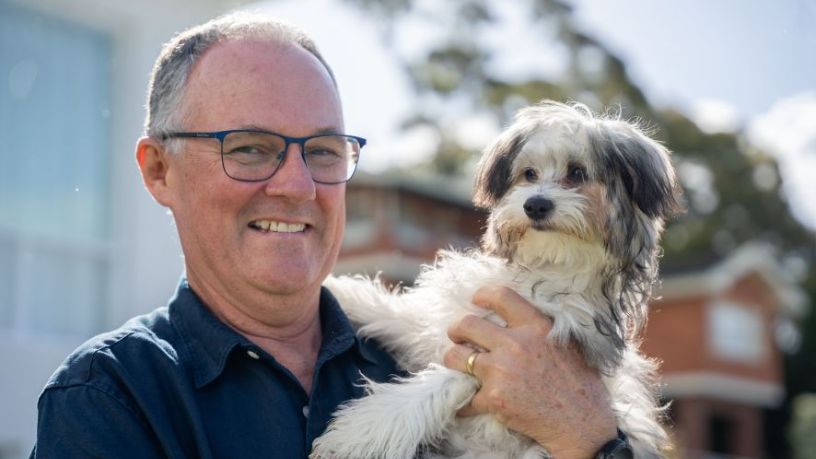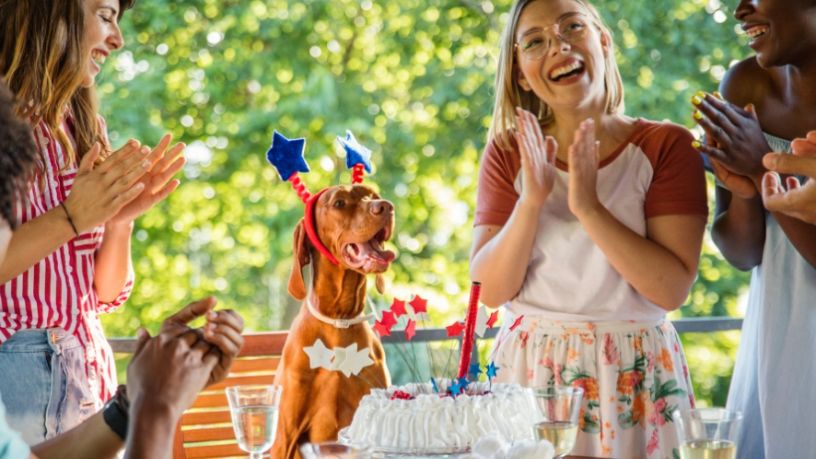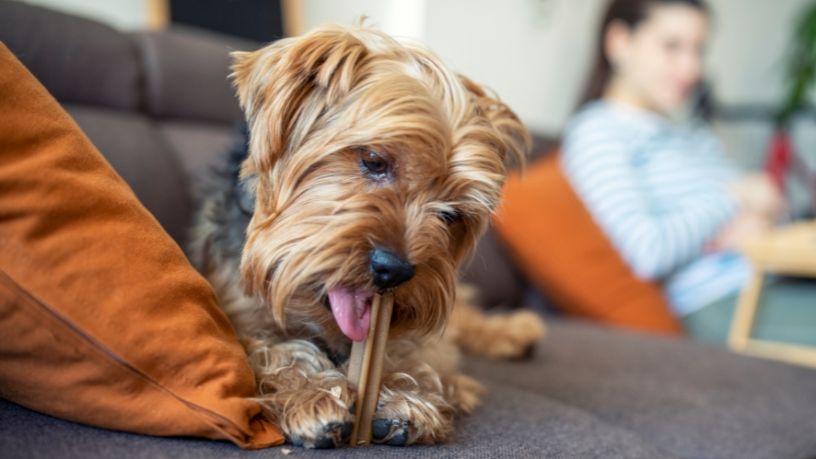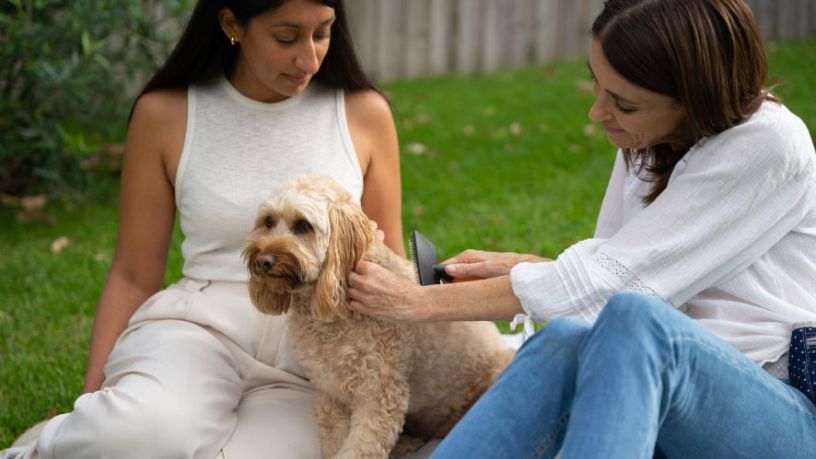Prep for your puppy’s arrival using our checklist of must-have items.
On this page
Key takeaways
Don’t punish a puppy for toileting inside. Instead use positive reinforcement when they do the right thing and be consistent.
Puppies need to be fully vaccinated before they venture too far outside or interact with other dogs. Ask your vet for advice.
Bringing home a new puppy is an incredibly exciting time. But if you’ve never owned a dog before, you’ll soon discover there’s a lot to learn about your new friend, especially during your first 30 days together.
We’ve broken down what you need to know into a handy new puppy guide.
New puppy checklist
Before bringing a puppy home, you first need to make sure you have everything they’ll need for their health, safety and happiness.
Your new puppy checklist should include:
- a soft bed
- water bowls
- a few toys to play with
- good quality puppy food and treats. It’s important to choose formulations made for puppies as they have different needs to fully grown dogs
- flea and worming treatments. Your vet or local pet shop should be able to help you choose the right options for your puppy
- a collar, lead, harness and name tag with your phone number
- a crate that’s just big enough for your puppy to turn around and lie down in
- a car harness or restraint
- puppy toileting pads.
If you have other pets, try to have all the items on your checklist set up in the home before bringing your puppy home, so that the other animals can get used to the changes.
It’s also vital you puppy proof your home ahead of your new arrival, removing anything poisonous (both chemicals such as cleaning products and foods poisonous to dogs) and items you don't want them chewing (for example, electrical wires, blind or curtain cords and your favourite shoes). You’ll also need to cover any gaps in the backyard fence and remove any toxic plants.1
Now is also the time to book into your local vet for puppy’s first vaccinations and to get pet insurance.
The first 48 hours with a new puppy
While the first 48 hours with a new puppy can be a lot of fun, it can also be an overwhelming time for the dog as they adjust to their new home, particularly if you’re bringing a puppy home at 8 weeks (the minimum acceptable age for a pup to leave its mother, according to the RSPCA).2
Have a comfy, safe, confined space prepared for your puppy where they have access to their food, water, a few toys and a warm, comfy bed.
Let your new puppy explore at their own pace but be sure to keep an eye on them so they don’t hurt themselves or wander somewhere they shouldn’t.
Establish a routine as soon as possible after bringing home a new puppy. That means feeding at the same time each day, a regular bedtime and taking them outside to toilet regularly. That’s around every 2 hours for young dogs.
In the early days of caring for a puppy, they won’t understand what they’re meant to do outside. Watch as they sniff and explore and reward them with treats, pats and praise if they do relieve themselves, as these are the initial stages of toilet training.
Weeks one to 3 with a new puppy
A week in and your new pup should be settled.
In that first week, register your new dog with your local council, make sure they are microchipped and book them in for a check-up with the vet to make sure they’re healthy and happy. They’ll also need their first or second round of vaccinations. Puppies need a series of vaccinations, spaced at regular intervals, so plan for this in advance.
Until puppies are fully vaccinated, they’re susceptible to a whole host of diseases. It’s important not to take them outside to play until after their final booster shot. Talk to your vet about what they recommend.
While they can’t venture into nature yet, the first 3 to 17 weeks of a puppy’s life is a critical period for social and behavioural development.3 Providing them with positive new experiences in a safe and healthy way during this time is crucial.
This means carrying them around to get them used to new sounds, sights and people outside the home. Just be sure to limit their contact with other dogs.
Now is also the time to get them used to other new experiences like riding in the car, being groomed and being left alone for short periods of time, which is vital to help prevent separation anxiety down the track.
When leaving your pup unattended at this early age, put them in their dedicated safe puppy area or in their crate (with soft bedding and access to water) so they can’t get lost or hurt themselves while unsupervised. Make leaving them alone a gradual process, building up by a few minutes at a time, to avoid causing anxiety. And always reward with a treat or some play time when you return.
As mentioned, toilet training starts from the moment your puppy comes home and will continue for several weeks (if not months). Toilet training requires consistency and patience. Aim to take your puppy out for a toilet break after eating or drinking, after waking from a nap, after play sessions or if they’re sniffing around the ground in circles (a sure-fire sign they’re prepping to pee).
You’ll also likely need to take them out a few times during the night in the first weeks. Always reward them for toileting in the place you want them to, but never punish them for accidents inside. Just clean it up quickly, using an enzymatic cleaner so your pup isn’t drawn back to the same spot next time they need to go. You can buy enzymatic cleaners from most supermarkets and pet stores.
30 days with your new puppy
By the time you’ve had your puppy for 30 days they will be around 12 weeks old. By this time, they should be feeling confident in their surroundings and showing off their own distinct personality.
Keep up with the toilet training and be sure to use positive reinforcement (reward-based training) for the right behaviour. Punishing puppies and dogs for the wrong behaviour is stressful for your pup and can do more harm than good.4
By this stage, your new puppy should be nearly ready for their next round of vaccinations and it’s time to start thinking about safe socialising with other dogs. Get them enrolled in puppy school and if not yet desexed, discuss this with your vet who can advise you on the best time to do this.
Above all, enjoy these early puppy days and weeks. They can be challenging, but now is the time to set up your new pet to be a happy, healthy, loved family member for years to come.

At Bupa, trust is everything
Our health and wellbeing information is regularly reviewed and maintained by a team of healthcare experts, to ensure its relevancy and accuracy. Everyone's health journey is unique and health outcomes vary from person to person.
This content is not a replacement for personalised and specific medical, healthcare, or other professional advice. If you have concerns about your health, see your doctor or other health professional.
1Animal Welfare Victoria. (2020). Toxic plants for dogs. Victoria State Government.
2RSPCA. (2024). How old should a puppy be before they are adopted/purchased?. RSPCA.
3RSPCA. (2012). The smart puppy and dog buyer’s guide. RSPCA.
4Vieira de Castro, A. C., Fuchs, D., Munhoz Morello, G., Pastur, S., de Sousa, L., & Olsson, I. A. S. (2020). Does training method matter? Evidence for the negative impact of aversive-based methods on companion dog welfare. PLOS One, 15(12): e0225023.
You might also like...
How to toilet train a puppy
Starting on day one can help make toilet training a puppy less stressful for everyone and will save time and clean-ups down the track.
How to plan a puppy dog party
Pets are a part of the family too, so we’ve put together the paw-fect guide to help you plan a party for your dog.
The best food and treats for your dog's dental health
Even dogs don’t like going to the dentist. The good news is you can protect their teeth and gums between check-ups with some of their favourite foods.
The essential dog grooming guide
Whether you’re giving them the usual brush, bath and trim or treating them to some TLC, it’s important to know how to safely and effectively groom your dog.





